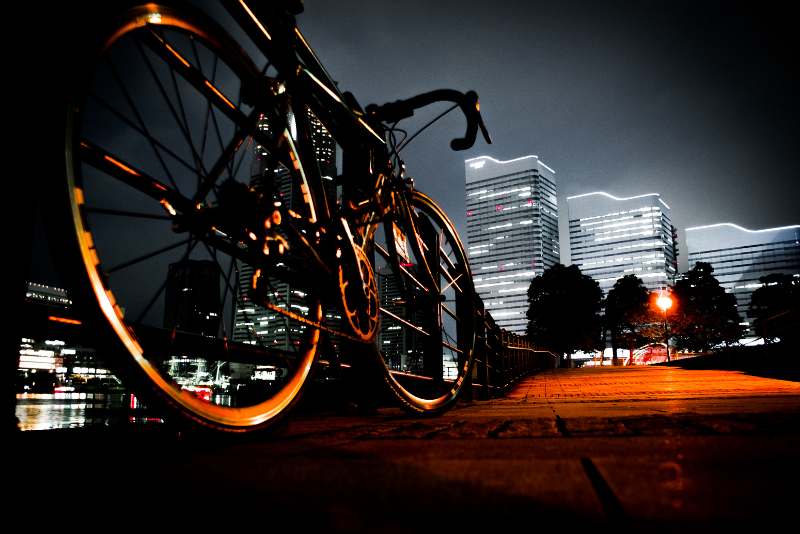Last Updated on 11 July 2024 by Cycloscope

Keeping your mobile phone, camera, tablet, or other device charged while you’re out cycling is essential
Luckily, there are a few ways to keep your devices charged when you’re on the go
Read on, and we’ll explore three of the most popular ways to keep your device powered up and ready to go!
Table of Contents
1. Portable Solar Chargers
Disclosure: Some of our articles contain affiliate links. This comes at no additional cost for you and helps us keep this website up and running. (as Amazon Associates we earn commission from qualifying purchases)

Whether you’re out cycling on a hot day or out camping in the wilderness, portable solar chargers are a great way to power your devices. They’re compact, lightweight, and durable, and they can be hung from a backpack for convenient portability.
Portable solar chargers, or power stations, come in a variety of sizes, from small 6-watt models to 20,000 mAh+ models. They are also available in foldable and fold-down styles, making them convenient for storage when not in use. Some of them even have built-in hooks and attachment points.
Investing in a portable power station that’s suitable for the lifestyle you live is crucial, as there are so many options to choose from.
The best portable solar chargers are capable of charging your device considerably in under an hour, even if it’s a cloudy day. They should also be able to charge three or more devices at once and may be designed for specific applications, like charging LED lights, or in this case, your smartphone.
The most efficient solar chargers available today are not only portable but also waterproof. Many use monocrystalline silicon cells to deliver the best possible output and connect to digital devices via standard USB ports.
All in all, these are great, affordable options that have many different use cases in addition to cycling. Consider browsing the available options and finding one that’s perfect for you and your needs.
2. Dynamo Hubs With USB Ports
Whether you’re a competitive cyclist, bike-packer, bike tourist, or even just a commuter, dynamo hubs with USB ports to keep your device charged when cycling is a great addition to your bicycle.
They allow you to use battery-intensive apps and devices without the hassle of lugging around heavy batteries. These systems are also a good solution for touring cyclists who don’t have the time to wait at the side of the road for their batteries to recharge.
They come in several different power ratings. Most hubs can output between 1.5 and 3 watts of electricity at 20 kPh, while some higher-end models can output over 4 watts! The power of your hub depends on how much electricity you realistically need, and the average speed you’re riding at.
There are also low-power hubs designed to meet the minimum requirements for bicycle lights. These are typically for riders who don’t ride at night unless they absolutely have to. These types of hubs are less suitable for KOM chasers or long-distance bike-packers and are targeted more toward commuters.
The average dynamo hub weighs around 400 grams, and they’re made of precision-made parts and need infrequent maintenance. With that said, they often require proprietary tools to service, which is less than ideal.
There are two primary ways to charge your device: through the USB port or through a power converter. This converter transforms the power from the hub into DC power, which is what your smartphone requires for its charging cycle.
3. Traditional Power Banks
Typically, a power bank has a built-in battery that can be recharged through a USB port. This allows you to charge your device on the go without the hassle of finding an outlet. Some power banks also come with an attached jump starter, which is an absolute game-changer in certain situations.
Besides charging your smartphone, some much larger models can even be used to charge other devices such as speakers or even a car’s battery! While power banks have become very popular over the past few years, there are a few things you need to know before you consider one.
The best power banks for bikepacking will have a built-in safety feature to protect your device and circuit board from damage. It is always a good idea to purchase a branded power bank, as they generally have a longer warranty period, better reliability, and plenty of reviews to read through.
Most power banks have a small LED indicator that shows you the amount of charge you’re able to convert to your device. It is also a good idea to check out the mAh rating of your device, as a higher-rated power bank will give you a larger charge. Pretty straightforward, right?
A good quality power bank will be built from high-quality materials, and contain a strong, reliable battery. This means that you can expect the device to last for a long time, unlike most of the cheaper or unbranded options on the market.
Why Should You Keep Your Devices Charged When Cycling?

Cycling is a fantastic way to stay healthy while exploring your local area (or further afield!). However, depending on how far you plan on traveling, you might find your devices running out of power long before you want them to—and it could be dangerous.
A low battery or dead phone can be pretty distressing when it happens, but it’s all too easy for a cyclist to forget to make this consideration before embarking on their journey.
If you aren’t sure how to stay connected for longer or why you should care, then you’re in the right place. Here are three good reasons for making staying charged a priority. First, let’s start with the basics.
1. Helps You to Stay on Track
No matter how familiar you are with your route or how experienced a cyclist you may be, none of us are immune from getting a little lost—it happens even to top cyclists! By utilizing the maps option on your phone, you can rest assured that you’re going the right way.
With a map app and a full battery, you can spend less time worrying about where you’re going and more time drinking in your surroundings.
2. Allows You to Monitor Your Health
Many smartphones have features for tracking your heart rate and other health metrics, especially if you use them in tandem with a smartwatch. But it all becomes a null point if your devices end up with 0% battery.
With a backup power supply on hand, you never have to worry about that possibility, allowing you to keep a close eye on your performance.
3. Provides a Helpline in Case of an Emergency
Though none of us may want to think about it, suffering an injury while adventure cycling is a likelihood we can’t ignore. If your smartphone runs out of power, you will likely lose your one means of communication. You’ll have no one to contact if you do injure yourself somehow.
A backup power supply to keep your phone charged could make all the difference in an unexpected situation.
Wrap-Up: Stay Energized While Cycling!
Cycling is a liberating and hugely enjoyable activity, beneficial for both your mind and body, but you need to do the necessary prep work! Part of this is ensuring you have the appropriate means to keep your critical devices fully charged so you can go even further.


